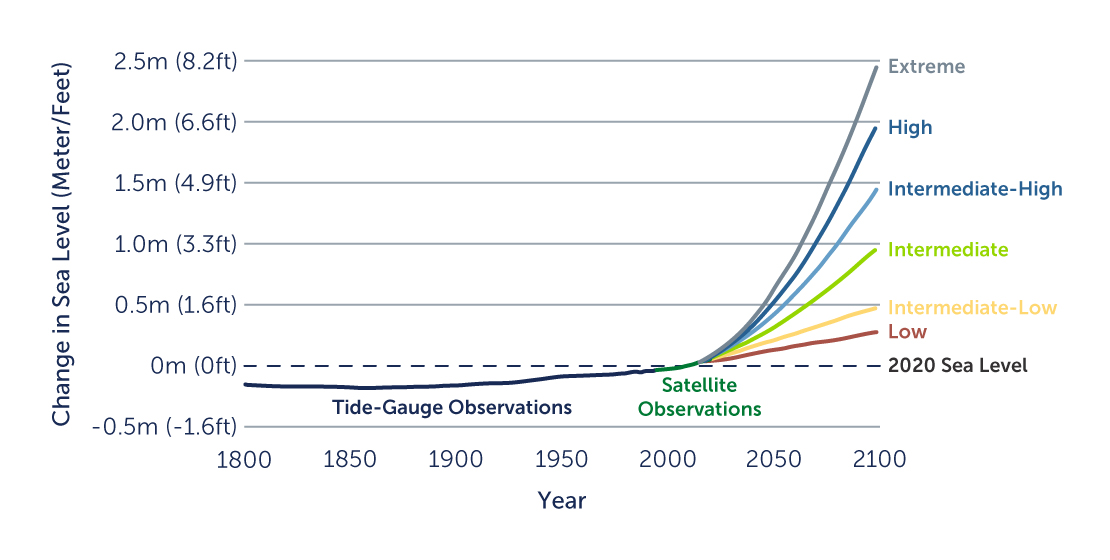Keeping Real Estate Portfolios Above Water Amid Rising Sea Levels
As investors focus more each day on environmental, social and governance (ESG) considerations, one risk that should increasingly come into focus is the rise in sea levels globally. There is no longer much of a debate around “if” sea levels are rising—they are—they’ve risen by 8 inches globally since 1880, and faster since 1900 than in any preceding century for at least 3000 years1, but the evidence suggests that this pace is accelerating materially, with some areas along the U.S. east coast and Gulf of Mexico seeing 8-inch rises in the last 50 years alone.2
Today, the debate has moved from “if” to “how fast” sea levels will rise from here. This is a function of a variety of interrelated factors that include greenhouse gas emissions, global temperature rises, and the rate of melting ice. The National Oceanic and Atmospheric Administration (NOAA) has summarized the debate by publishing a 100-year forecast incorporating the latest science. They forecast a 1-foot global sea level rise by 2100 at the “low” level, and a ~6-foot rise at the “high” level.
Possible future sea levels for different greenhouse gas pathways

Source: NOAA and Climate.gov. From Climate.gov: Observed sea level from tide gauges (dark blue) and satellites (dark green) from 1800–2015, with future sea level through 2100 under six possible future scenarios (colored lines). The scenarios differ based on potential future rates of greenhouse gas emissions and differences in the plausible rates of glacier and ice sheet loss.
Assessing the risks
From a real estate investor’s point of view, assessing the risk of such potentially dramatic changes can be a challenge, but steps can be taken to begin to quantify exposure and to mitigate risks. The risks to real estate assets range from periodic flooding to chronic inundation, which not only damage property but limit tenants’ ability to conduct business.
At a high level, we know that eight of the world’s ten largest cities are in or near coastal areas—suggesting that the economic activity potentially at risk cannot be understated. In the U.S., almost 40% of the population is clustered in high-density coastal areas, which are prone to flooding, shoreline erosion, and hazards from storms.
Indeed, a recent NASA study indicates a rise of two feet above today’s sea level would put more than $1 trillion of property and structures in the U.S. at risk of inundation, with roughly half of that exposure concentrated in Florida.3
Other coastal states with large areas of low-lying land, including California, Louisiana, North Carolina, and South Carolina also look particularly vulnerable to rising seas and coastal storm surges.
1. Source: IPCC “Climate Change 2021”: https://www.ipcc.ch/report/ar6/wg1/downloads/report/IPCC_AR6_WGI_SPM.pdf
2. Source: Lindsey, Rebecca. “Climate change: global sea level.” ClimateWatch Magazine (2019).
3. Source: Underwater: Rising Seas, Chronic Floods, and the Implications for US Coastal Real Estate (2018), Union of Concerned Scientists (ucsusa.org)

